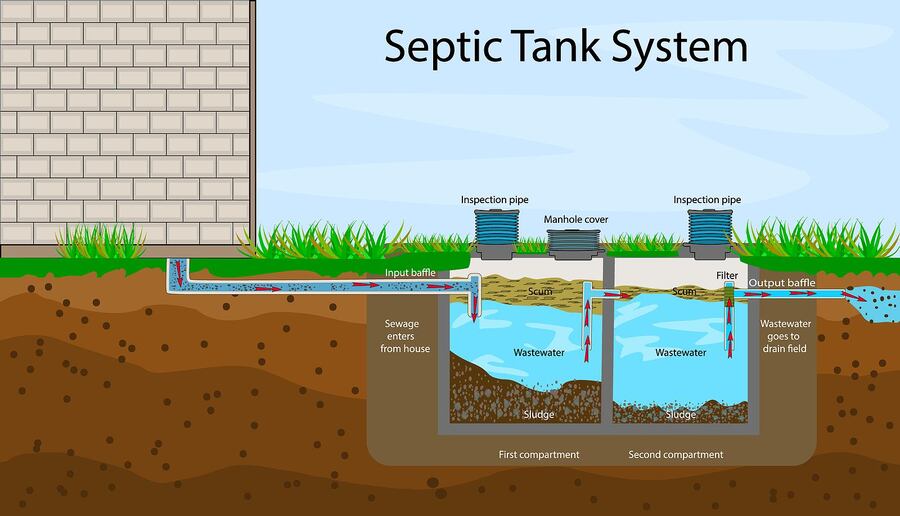Call This Wednesday to Get $25 OFF
Clean Solutions, Dirty Jobs – Done Right. Reliable. Responsive. Remarkable.
Call This Wednesday to Get $25 OFF
Clean Solutions, Dirty Jobs – Done Right. Reliable. Responsive. Remarkable.
There are several factors you should consider when considering a septic tank installation. The most crucial one is whether to choose an aerobic or anaerobic unit. Both wastewater treatment systems have advantages and drawbacks that impact your decision and long-term performance. It is advisable to consult a professional before investing in an onsite septic system. At Septic Connection, we understand the intricacies of both systems, providing pertinent information to ensure optimum efficiency and longevity. Let’s explore both systems to ensure a seamless septic tank installation and long-term benefits.

Aerobic wastewater treatment systems use oxygen to break down organic matter. They comprise a tank where waste and oxygen mix, promoting bacteria growth. These naturally occurring bacteria break down and decompose organic material, making aerobic systems efficient. Here are some of the pros and cons of aerobic systems.
Aerobic units efficiently break down organic matter, providing a better wastewater treatment level. Unlike anaerobic systems, the enhanced efficiency ensures proper treatment and cleaner effluent. This goes a long way to minimize the risk of environmental contamination and health hazards.
Another benefit of aerobic systems is reduced odor. Since the naturally occurring bacteria break down waste effectively, fewer sewer smells are released into the environment. If you are concerned about unpleasant smells on your property, consult a professional septic company in Fountain Inn to install an aerobic unit.
The septic system is an onsite waste treatment facility, and it is incredibly reliable. However, the system is only as effective…
Imagine flushing your toilet and then suddenly realizing that your backyard has turned into a swampy mess. This unpleasant experience is…
Soil testing is a critical step in various construction and environmental projects. It provides essential information about the ground conditions, which…
Grease traps are remarkable tools that help keep your establishment clean and free from bad odors. Septic Connection has a…
If you have just moved into a new home or property that relies on a septic system for waste and wastewater…
A major drawback of this type of septic system is power dependency. These systems run on electricity, making them inefficient in areas that experience frequent blackouts. Homeowners may need backup power sources to prevent inconveniences or recurring septic tank repair emergencies.
Anaerobic wastewater treatment systems use anaerobic bacteria to break down organic waste. Aerobic units consist of a tank, but the difference is that the tank separates solids and liquids. Let’s look at some of the pros and cons of anaerobic systems to help you decide.
The main benefit of an anaerobic unit is its cost-effectiveness when it comes to installation and maintenance, such as septic tank pumping. This makes anaerobic systems popular among homeowners who want an onsite treatment system without breaking the bank.
Anaerobic systems are simple in design and operation. This means homeowners don’t have to worry about frequent septic tank repair and maintenance calls. Simplicity can also lower long-term septic tank pumping and maintenance costs in the long run.
One disadvantage of anaerobic systems is their low efficiency in wastewater treatment. This may result in a high risk of environmental contamination or recurring septic tank cleaning and maintenance sessions. A professional septic company can help you address such issues during the design phase, preventing costly damages and replacement later.
When choosing a suitable wastewater treatment system, consider the pros and cons of aerobic and anaerobic systems. Contact us at Septic Connection and schedule a consultation with our experts to install the right system for your disposal needs. We provide comprehensive services, including septic tank cleaning, to ensure maximum efficiency and longevity.
Many septic system failures do not happen overnight. They develop quietly, over months or even years, until a small issue becomes an expensive emergency. That is why routine septic maintenance…
Read moreA properly functioning septic system is essential for protecting your home, property, and local environment. Unfortunately, many homeowners only think about their septic system when something goes wrong. As a…
Read more